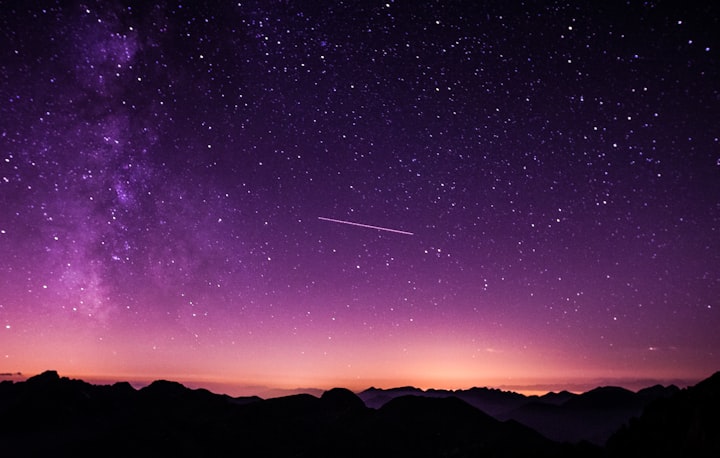5 Most Unsolved Mysteries Of The Universe
We’re still working hard to unravel the mysteries of the universe

The more new things are found, the more intriguing they become.
Our universe is full of strange phenomena and we don’t know why some of them happen.
1. Most of the universe is missing
Astronomers are confronting a mystery that undermines much of what we thought we knew about the universe.
We once thought that the universe was dominated by two substances: normal matter, called “baryonic matter” (matter that interacts with light and other forms of radiation), and invisible “dark matter”, which is transparent to light and makes its presence felt only through gravity.
But in the late 1990s, cosmologists made an unexpected discovery. The expansion of the universe was supposed to be slowing down because of the gravitational pull of the matter inside it, but instead, it was accelerating.
Evidence for this comes from supernova explosions in galaxies billions of light years away from Earth. According to previous models of cosmic expansion, these explosions are much fainter than expected.
The culprit is called “dark energy” and it is thought to make up 70% of the universe. We don’t know exactly what dark energy is, but perhaps the most intriguing and even alarming aspect of the discovery is that it seems to be increasing.
Until 7.5 billion years ago, the expansion was slowing down. Then the force of dark energy overcame gravity and the expansion started again.
Some scientists suggest that if dark energy continues to grow, after billions of years it will become so powerful that it will tear galaxies, stars and even particles of matter apart. In this case, our universe could end in the “Big Rip”.
2. Impossible stars
In 2011, scientists at the European Southern Observatory discovered a strange star: SDSS J102915+172927, located 4,500 light-years from Earth in the constellation Leo. This star, named Caffau’s Star, has about four-fifths the mass of the Sun.
Almost all of its mass is made up of hydrogen and helium, the two lightest elements in the universe. These two elements make up 99.99993% of the star’s composition. Heavier elements (metals) are almost non-existent.
Such a pure and light star must have formed more than 13 billion years ago from raw cosmic matter left over from the Big Bang. The problem is that according to accepted models of star formation, this star should never have formed.
For pre-star clouds to collapse and create enough gravity to form stars, they must either contain more metal than Caffau’s Star or have a mass greater than it. So small, low-density stars like this shouldn’t exist.
3. Miranda’s secret
In 1986, Voyager 2 flew past the planet Uranus and took pictures of the planet’s moon Miranda. Judging by the variety of surface features on this small moon, Miranda breaks the rule that small celestial bodies show no geological activity.
Astronomers have nicknamed it the “Frankenstein moon,” perhaps because it appears to have been torn apart and reassembled by an ancient planetary collision.
But there is a problem with this theory. Miranda orbits so close to Uranus that if it were completely torn apart, it would never be able to come back together. That’s why some scientists think Miranda is being pulled into shape by enormous tides.
4. Rectangular galaxies
According to the laws of orbital mechanics, stars always follow elliptical orbits under the influence of gravity. Therefore, when they come together in large groups, they form either flat disk-like spirals or ball-shaped ellipticals.
It should be impossible for galaxies to have sharp rectangular corners, but astronomers have found a few such rectangular galaxies.
For example, LEDA 074886 in the constellation Eridanus is a small, rectangular galaxy embedded in a nearby galaxy cluster. The question is whether this shape is a long-lived structure or a temporary coincidence.
Astronomers studying it with the giant Japanese Subaru telescope think the latter is more likely, and that a collision and merger between two galaxies may have scattered stars, creating the current box-like arrangement and triggering a wave of star formation at the new centre.
5. Orphan planet
According to the standard definition, a planet is a celestial body of considerable mass orbiting a star, formed from the debris left over from star birth. So how is it that some planets wander alone in space, far from stars?
Astronomers have discovered several such planets. The closest and most intriguing one has the catalogue name CFBDSIR J214947.2 040308.9.
First seen in 2012, this orphan planet is located about 100 light-years away, in the vibrant AB Doradus group (a cluster of young stars). With a surface temperature of about 400 degrees Celsius, it is probably a gas giant, much heavier than Jupiter.
It is still hot, either because of the events of its formation or perhaps because of its own internal energy source, driven by gravitational contraction. It is too far from stars to reflect any starlight. We were able to detect it thanks to the infrared radiation from its surface.
Like all orphan planets, astronomers are not sure how they formed. Perhaps it began its life orbiting a star, then got too close to another star and was ejected far away.
Or, if it formed in the same nebula as the cluster of stars around it, it might not be a planet at all, but a “sub-brown dwarf star”.
The original version of this article was published on another platform.
You may follow me there or If you enjoy writing and storytelling, you can join Medium, Vocal as a creator to earn money and find your voice and reach out to a broad audience.
About the Creator
Gokhan Yalcuk
I write and support writers | For more: gokhanyalcuk.com






Comments
There are no comments for this story
Be the first to respond and start the conversation.